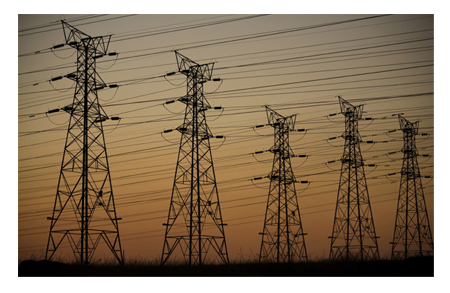Solar Parks boom in Tamil Nadu as Solar Purchase Obligation drives Growth
December 17, 20129 Solar Stories you should not Miss!
December 18, 2012Power is one of the most widely used resources used in every sphere of life, business, etc. If we talk about the Indian economy, we find  that the total Installed Capacity of Power is nearly 2 Lakh MW. Thermal generation accounts for almost 2/3rd (66%) of the production. India’s electricity generation for the fiscal year 2011-12 rose 8.1%. However, if we compare the generation of power to the capacity installed, we find that the generation of power has not kept pace with that of capacity addition which is done in the industry.
that the total Installed Capacity of Power is nearly 2 Lakh MW. Thermal generation accounts for almost 2/3rd (66%) of the production. India’s electricity generation for the fiscal year 2011-12 rose 8.1%. However, if we compare the generation of power to the capacity installed, we find that the generation of power has not kept pace with that of capacity addition which is done in the industry.
Power Consumption – Changing Pattern in India
July 2012 saw major power crisis in the country, depriving as many as 600 million people which is almost half the country’s population. Such power crisis caused huge loss to the day to day life activities and disrupted transportation networks for hours. Three Electricity grids connecting more than 20 states including the national capital collapsed which resulted in power cut across the Indian Territory. With the improvement in peoples’ standard of living and rising disposable income and increasing needs, average electricity demand has risen to 75-80 terawatt hours (TWh) per year from 50 TWh per year just five years ago. Such huge rise of almost 50% in the energy consumption and also the rising industrial consumption along with higher use of electric consumer goods during the economic boom has put pressure on the grid.
Government of India plans to add 88,000 MW of generation capacity in the 12th five year plan starting 2012-2017. Country added about 55,000 MW in the previous five-year period until March 2012. Ambitious goal of “Power for all by 2012” targeted by the Ministry of Power in India unfortunately failed due to the changing and rising demand pattern of people across the country. Not only this, India faced a shortage of domestic coal as output owing to the reason that major Coal producer in India – Coal India, (which is nearly a monopoly in the country) has stagnated due to delayed environmental clearances, land acquisition troubles and little investment in advanced technologies.
Read about List of Top Power/Electricity Companies/Utilities in India.
Reasons causing Electricity Theft
Availability of fuel is now becoming a major concern these days with the recent coal block scandals which is in the view of CAG. The T&D sector is suffering due to delays in generation and transmission plans, high aggregate technical and commercial losses, insufficient metering, poor recovery of dues, and competition from Chinese and Korean players for electrical equipment. In order to cover the costs for subsidies, corruption and inefficiency, tariffs haven’t risen enough for years. Electricity theft was not being checked, which resulted in huge losses for the electricity distributors. The losses ran into the range of 40% in some states where as the country-wide average being recorded at 27%. The losses of distribution companies inflated to crisis levels. The total accumulated losses stood at a mind-boggling Rs 2,40,000 Crore by the end of March this year. Financial institutions like banks which are averse when it comes to lending to state utilities were also of not much help. This forced them to ration electricity due to the unavailability of enough cash to buy more power.
This also puts at risk the finances of private companies which are into the business of selling utilities power, thus creating a disincentive to investment in a sector that badly needs it. The PSU banks or the state-backed banks loaned a lot of money to power companies only to face large write-downs which could lead to a credit crunch.
Greater decentralization in the power sector came as a relief for the entire industry. The decision-making opened up the opportunities for interesting experimentation by the states which is already started by many states like Tamil Nadu, Gujarat, etc.
- Tamil Nadu is relying more on nuclear power
- Gujarat is considering giving farmers a choice between more expensive but steady power and cheap but uncertain power.
Conclusion
In order to improve the governance in the sector in a broader manner, the number of states and cities that have privatized or are contemplating privatization should be increasing rapidly. Distribution of power to allow effective metering of power usage so as to facilitate proper payment by consumers should also rise.
It is seen that the power sector has been addressing its problems but owing to the fact that power has become a necessity for ordinary Indians and an integral part of the rising expectations that Indian dynamism must satisfy, a need for policy change for the sector is something which is required at the current stage only to ensure a more powerful, shining and lightened up India.

